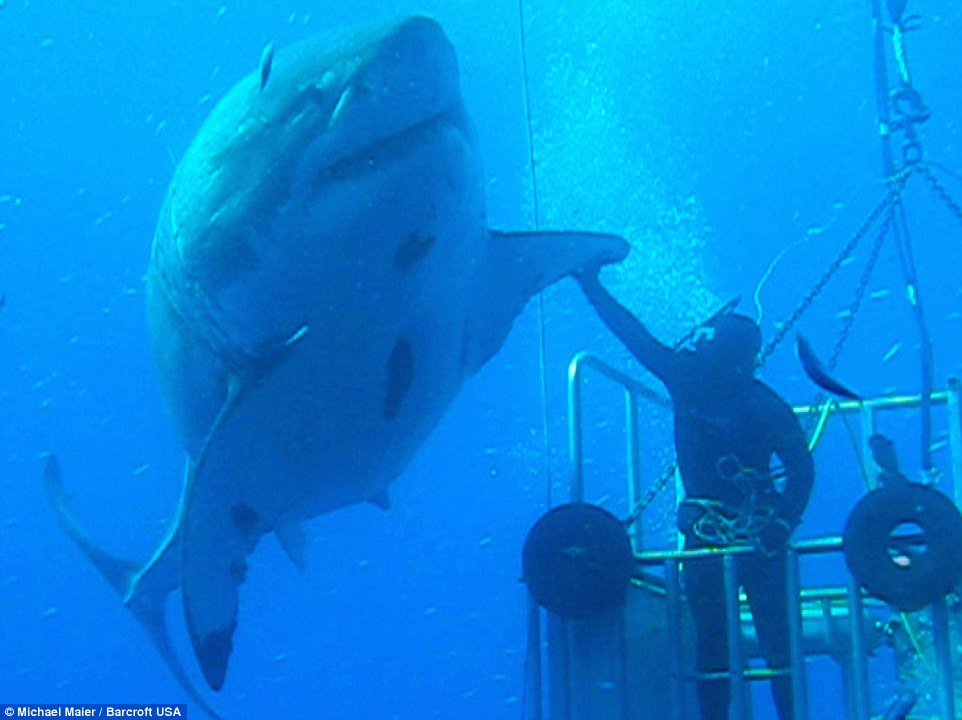That's A Twenty Footer: 'Deep Blue' The Largest Great White Shark Ever Caught On Camera
“That’s a 20 footer….”
One of the most famous lines in Jaws, spoken in shock by shark lover and ichthyologist Matt Hooper. He is quickly corrected by seasoned shark hunter Quint who estimates the shark’s length and weight to be “25 (feet)… 3 tonnes of him.”
Some were skeptical about the size of the shark in Jaws and felt it was exaggerated and unfeasible that a Great White shark could reach such a size. Only ten years after Jaws, a 21.8 foot long (6.6 meter) GWS was caught by the Australian shark hunter Vic Hislop in 1985.
Hooper: That’s a 20 footer.
Quint: 25…. 3 tonnes of him.
Over the last 30 years, 90% of the world’s big fish have been wiped out so sightings of extremely large sharks (Great White or otherwise) have decreased considerably.
However, in late 2013 shark conservationist Mauricio Hoyos Padilla captured footage of ‘Deep Blue’, a massive beast while working for Discovery Channel’s “Shark Week”. At nearly 20 feet long (Deep Blue was pregnant at the time) is thought to be the largest great white ever caught on film.
In the video, Deep Blue swims up to the cage and a diver pushes the shark as it pokes around before it eventually swims away. Hoyos Padilla captured the incredible footage near Guadalupe Island, off the west coast of Mexico’s Baja California peninsula.
It’s estimated that Deep Blue, who has become so famous that she has her own Twitter account, is nearly 50 years old. Great White sharks have an average lifespan of 70 years, though it varies between male and females. It’s likely that Deep Blue became so big simply because of her age. It’s an older animal and when you look at the distribution of any animal, it’s the larger animals that are older.
Despite her epic size, orcas, a great white shark’s natural predator, wouldn’t have any issues taking Deep Blue down. Orcas are very smart and they work together, they’re pack hunters.
"When I first saw Deep Blue, I thought one thing: hope," he says. "A shark of this size is likely 50 years old, and that tells us that conservation efforts are really working. We've seen several pregnant females like her, but now there is a new challenge: protecting the pups."
Padilla explains that the inshore waters that are full of food and free of predators (perfect for tiny shark pups) are also dangerous in terms of fishing pressures. "Baby sharks are particularly vulnerable to getting stuck in shallow water lines or nets," he says. Not to mention pregnant females are often accidentally targeted by sport fisherman, as they're often the biggest fish around.
The video, which was shot in late 2013, has been viewed over 300,000 times in just a few days, and it seems that people are just as amazed by it as they were with the first one. We can only hope this represents growing public support for these amazing animals, and scientists like Padilla who work so hard to protect them.
You can follow Deep Blue on Twitter
If you would like to contribute a guest blog, please visit our ‘work with us’ page
Did you enjoy this blog? You can support The Daily Jaws by donating via PayPal



